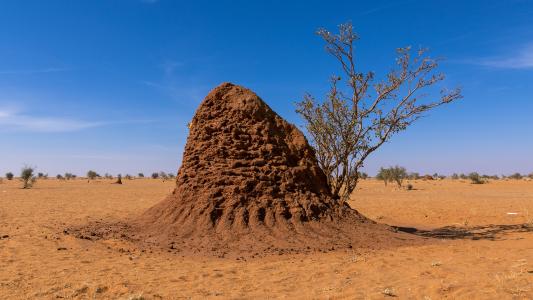A decade after an MIT researcher theorized that metal should be able to heal itself, scientists in New Mexico have witnessed the phenomenon firsthand — and it has the potential, according to the researchers, to one day lead to an “engineering revolution.”
The challenge: Metal has made the modern world, holding up our bridges, skyscrapers, and other large structures.
However, repeated stress or motion can “fatigue” metals, causing microscopic cracks to form in them. These tiny cracks then grow until they eventually cause the metal to snap or break apart.
“When [metals] do fail, we have to contend with replacement costs, lost time, and, in some cases, even injuries or loss of life.”
Brad Boyce
To minimize the chance of this leading to a collapsed building or bridge, engineers will incorporate extra safety features and redundancies into their designs. Those can multiply construction costs, and some will still break due to metal fatigue.
“When they do fail, we have to contend with replacement costs, lost time, and, in some cases, even injuries or loss of life,” said Brad Boyce, a materials scientist at Sandia National Laboratories (SNL). “The economic impact of these failures is measured in hundreds of billions of dollars every year for the US.”
Nano-surprise: While studying the nanoscale cracks that form during the earliest stages of metal fatigue, SNL researchers discovered that, under the right conditions, the tiny fissures can fuse back together, leaving no sign of the previous damage.
“This was absolutely stunning to watch first-hand,” said Boyce. “What we have confirmed is that metals have their own intrinsic, natural ability to heal themselves, at least in the case of fatigue damage at the nanoscale.”
The SNL group witnessed the phenomenon during an experiment in which a tiny piece of platinum was tugged from both ends 200 times per second, in a vacuum.
As they expected, the researchers saw cracks characteristic of metal fatigue form in the metal. What they didn’t expect was that one end of a crack would fuse back together about 40 minutes into the experiment, leaving the rest of the crack to reform in a different direction.
“This was absolutely stunning to watch first-hand.”
Brad Boyce
Theory confirmed: While this is the first time anyone has reported seeing a metal heal itself, the concept isn’t brand new — in 2013, Michael Demkowicz, then an assistant professor at MIT, theorized it would be possible based on the results of computer simulations.
After witnessing the self-healing metal, the SNL team reached out to Demkowicz, now a professor at Texas A&M. He recreated the experiment in a computer simulation and confirmed it aligned with his previous theory.
Looking ahead: Right now, all the researchers know is that platinum is able to autonomously overcome the early signs of metal fatigue in a lab. Future studies will be needed to see whether other metals — especially cheaper, stronger, and more common ones — share this ability, under conditions that could be useful for engineering.
“The extent to which these findings are generalizable will likely become a subject of extensive research,” said Boyce. “We show this happening in nanocrystalline metals in vacuum. But we don’t know if this can also be induced in conventional metals in air.”
If there’s a practical application at the end of this research, we could be headed toward an “engineering revolution,” according to the researchers, one in which bridges, buildings, and other structures can self-repair minor damage before it becomes a major problem.
We’d love to hear from you! If you have a comment about this article or if you have a tip for a future Freethink story, please email us at [email protected].






